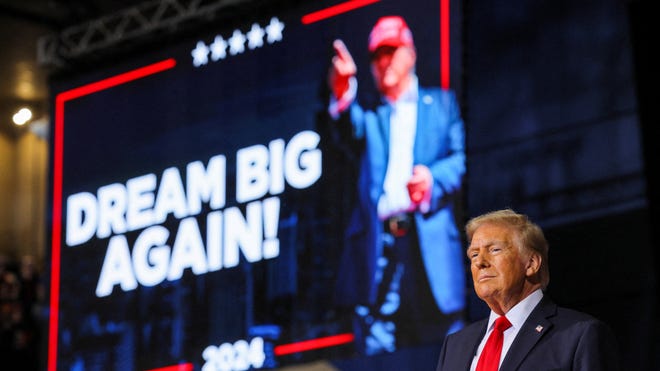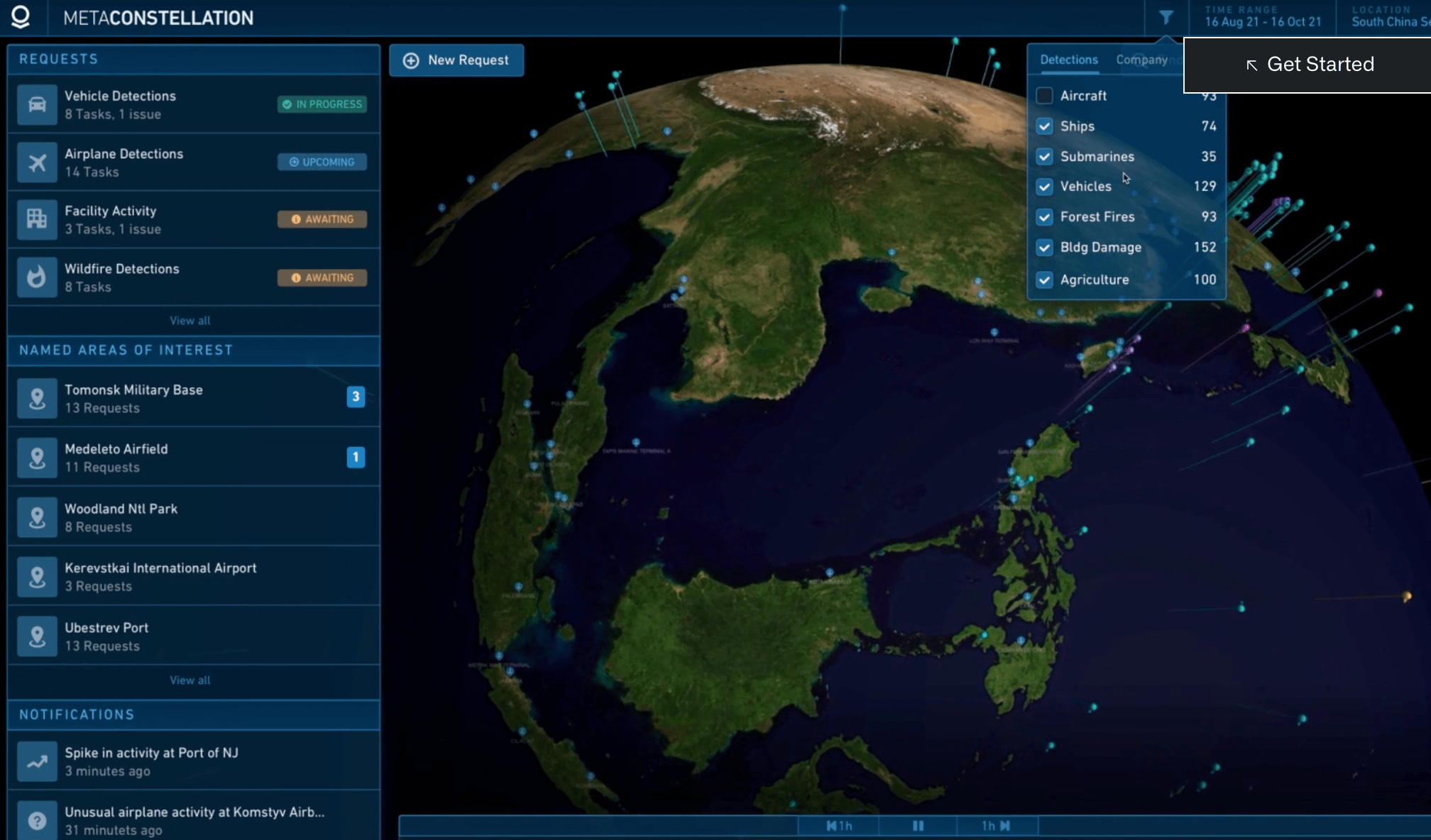Trump's 10% Tariff Threat: Conditions And Exceptions

Table of Contents
The Initial Announcement and Rationale Behind the 10% Tariff
The announcement of potential 10% tariffs was often part of a broader strategy, largely fueled by the escalating trade war with China and concerns about national security. The stated goals were multifaceted: protecting American industries from perceived unfair competition, reducing the US trade deficit, and leveraging tariffs as a bargaining chip in international trade negotiations.
- Specific industries targeted: The initial 10% tariff threat often targeted specific sectors like steel, aluminum, and various consumer goods imported from China. The selection was frequently tied to domestic industries lobbying for protection from foreign competition.
- Economic arguments: Proponents argued that the tariffs would level the playing field for American businesses, increase domestic production, and ultimately lead to job creation within the US. Critics countered that tariffs would raise prices for consumers, lead to retaliatory tariffs from other countries, and disrupt global supply chains.
- Political considerations: The tariff policy was inextricably linked to the political climate, serving as a key component of the Trump administration's "America First" agenda. This political context significantly influenced the implementation and negotiation surrounding the tariffs.
Conditions Triggering the 10% Tariff
The criteria used to determine which goods were subject to the 10% tariff were complex and often lacked complete transparency. While country of origin was a significant factor (particularly China), specific product categories also played a role. The selection process frequently involved extensive lobbying from affected industries and often appeared ad hoc rather than based on a coherent, clearly defined economic strategy.
- Examples of goods subject to the 10% tariff: A wide range of goods, from solar panels to washing machines and various consumer electronics, faced these tariffs depending on origin and specific classifications.
- Methodology for tariff application: The administration largely relied on existing trade laws and regulations, using Section 301 of the Trade Act of 1974 to justify actions against unfair trade practices by other nations. However, the application of these laws was often criticized for its lack of transparency and consistency.
- Impact on various sectors: The tariffs had a significant ripple effect across the US economy. While some domestic industries benefited from increased demand, others suffered from higher input costs and reduced competitiveness in global markets.
The Role of National Security in Tariff Imposition
National security concerns were frequently cited as justification for the imposition of tariffs, especially those targeting goods from countries deemed strategic rivals. This approach often sidestepped traditional trade dispute mechanisms and allowed for tariffs to be imposed without the usual WTO-based process.
- Specific examples: Tariffs on steel and aluminum, for instance, were partially justified on national security grounds, citing the importance of these materials for defense industries.
- Legal challenges: The use of national security as a justification for tariffs faced considerable legal challenges, with critics arguing that the invocation of national security was overly broad and lacked sufficient evidence.
- Effectiveness: The effectiveness of using national security as a justification remains a matter of debate, with mixed economic results and ongoing legal and political ramifications.
Exceptions and Exemptions to the 10% Tariff
Businesses and industries facing hardship due to the tariffs could apply for exemptions. This process involved demonstrating significant economic harm and typically required detailed documentation and justification. The criteria for granting exceptions were often subjective and open to interpretation, leading to inconsistency in the application of exemptions.
- Examples of exemptions: Specific products or industries deemed essential, those facing severe economic hardship, or those for which viable domestic alternatives were unavailable might receive exceptions.
- Number of requests and grants: Thousands of exemption requests were filed, with a variable success rate depending on the specific product, industry, and the perceived political and economic impact of the exemption.
- Appealing a denial: Companies could appeal denial of an exemption, but the process was often lengthy and complex, potentially requiring legal representation.
Economic Impact of the 10% Tariff and its Exceptions
The economic effects of the 10% tariff and its associated exceptions were complex and multifaceted. While some sectors benefited from increased domestic demand and production, many others experienced negative consequences, including higher input costs, reduced export markets, and job losses.
- Changes in import/export volumes: The tariffs demonstrably affected import and export volumes, although the exact magnitude and distribution of effects varied significantly by sector.
- Impact on consumer prices and inflation: The tariffs contributed to increased prices for consumers on certain goods, leading to concerns about inflationary pressures.
- Effect on domestic industries: Some domestic industries thrived, while others, especially those reliant on imported inputs, faced substantial challenges. Job creation and job losses were heavily debated, with conflicting studies offering different conclusions.
Conclusion
Trump's 10% tariff policy, though ostensibly aimed at protecting American industries and reducing trade deficits, created a complex web of conditions, exceptions, and significant economic consequences. The policy was marked by a lack of transparency in its application, the frequent use of national security justifications, and a varied economic impact across different sectors. Understanding the nuances of this policy requires careful consideration of its stated rationale, its complex implementation, and the diverse economic effects on businesses and consumers alike. Further research on the impact of Trump's 10% tariff and similar trade policies is encouraged to gain a comprehensive understanding of their effects on global trade dynamics. For more information on navigating the intricacies of Trump tariffs and their exceptions, continue your research using relevant keywords.

Featured Posts
-
 Investing In Palantir Stock A Pre May 5th Analysis
May 10, 2025
Investing In Palantir Stock A Pre May 5th Analysis
May 10, 2025 -
 London Outing Harry Styles Sports A 70s Stache
May 10, 2025
London Outing Harry Styles Sports A 70s Stache
May 10, 2025 -
 The Europa League Challenge Can Teams Contain Brobbeys Strength
May 10, 2025
The Europa League Challenge Can Teams Contain Brobbeys Strength
May 10, 2025 -
 Zolotaya Malina 2023 Dakota Dzhonson Sredi Nominantov Na Khudshuyu Rol
May 10, 2025
Zolotaya Malina 2023 Dakota Dzhonson Sredi Nominantov Na Khudshuyu Rol
May 10, 2025 -
 Bbc Strictly Come Dancing Wynne Evanss Response To Return Rumors
May 10, 2025
Bbc Strictly Come Dancing Wynne Evanss Response To Return Rumors
May 10, 2025
